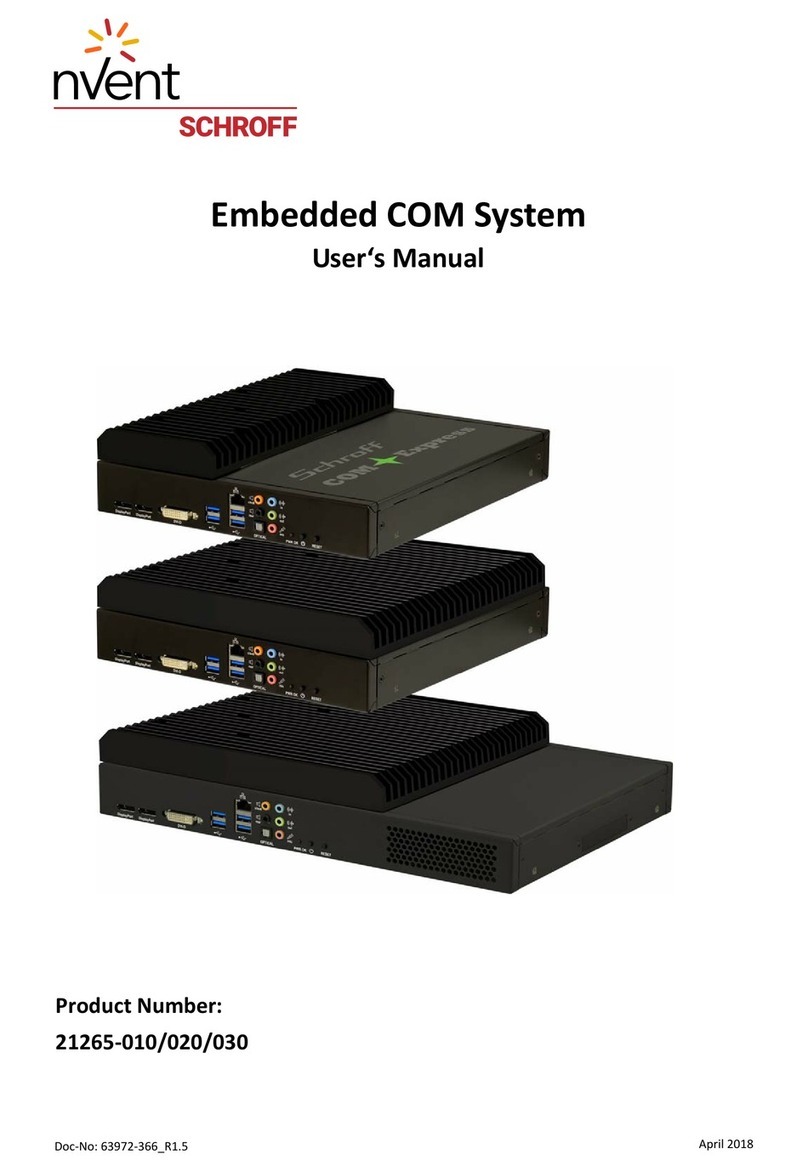INSTRUCTION SHEET
WARNING:
1. nVent products shall be installed and used only as indicated in nVent product instruction sheets and training materials. Instruction sheets are available at www.nVent.com and from your nVent
customer service representative.
2. nVent products must never be used for a purpose other than the purpose for which they were designed or in a manner that exceeds specified load ratings.
3. All instructions must be completely followed to ensure proper and safe installation and performance.
4. Improper installation, misuse, misapplication or other failure to completely follow nVent's instructions and warnings may cause product malfunction, property damage, serious bodily injury and/or death,
and void your warranty.
SAFETY INSTRUCTIONS: All governing codes and regulations and those required by the job site must be observed. Always use appropriate safety equipment such as eye protection, hard hat, and
gloves as appropriate to the application.
nVent, nVent CADDY, nVent ERICO Cadweld, nVent ERICO Critec, nVent ERICO, nVent ERIFLEX, and nVent LENTON are owned by nVent or its global affiliates. All other trademarks are the
property of their respective owners. nVent reserves the right to change specifications without prior notice.
TECHNICAL SUPPORT:
www.nVent.com IP9021_A 4 of 6 2022 nVent All Rights Reserved
Assemblage/Installation :
L'installation doit être effectuée par une personne qualifiée en protection contre la foudre et jamais pendant un orage.
Le SIREMOTETESTER contient un capuchon percé pour remplacer le capuchon plein fourni avec le PDA RT.
Le coupleur sert à connecter et protéger les connexions entre le PDA RT et le SIREMOTETESTER.
Le terminal PDA RT peut toujours fonctionner même si le SIREMOTETESTER ne fonctionne pas ou n'est pas utilisé.
Dans tous les cas, vous pouvez utiliser le testeur manuel SI-TESTER pour vérifier le PDA RT.
Un joint torique est installé sur le SIREMOTETESTER et un autre détaché pour l'installation sur le PDA RT.
1. Placer le SIREMOTETESTER à la lumière du soleil afin de le charger pour la première fois et de faire un
test du PDA avant l'installation. Vous obtiendrez des lux plus élevés (120 000 lux) par une journée
ensoleillée à midi avec le panneau solaire directement face au soleil dans un emplacement équatorial.
A midi, le soleil direct sera de 32000 à 100000 lux. Le soleil indirect sera de 10000 à 25000 lux. Cependant, il n'y a que
400 lux au lever ou au coucher du soleil par temps clair. Donc, il vaut mieux tester vers midi pour une première utilisation.
Le temps de charge peut varier de 10 à 30 minutes selon les conditions météorologiques, la latitude, la saison et l'heure de
la journée. La charge la plus rapide se fera vers midi par une journée ensoleillée avec la lumière directe du soleil.
2. Retirez le capuchon plein de la base du PDA RT (seuls les modèles RT ont un capuchon).
Le capuchon plein doit être utilisé lorsque le SIREMOTETESTER n'est pas connecté.
3. Installez le capuchon percé sous la base du PDA RT. Placez le deuxième joint torique, inclus avec le
SIREMOTETESTER, dans la cavité des filetages du PDA RT.
4. Vissez le coupleur dans le filetage du SIREMOTETESTER.
5. Vissez le PDA RT dans le coupleur. L'introduction de la fiche dans la prise se fait sans qu'il soit
nécessaire de toucher la fiche ou la prise, simplement en vissant toutes les pièces ensemble jusqu’à fin
course (PDA RT, coupleur et SIREMOTETESTER). Vous pouvez utiliser une clé à molette.
6. Vissez fermement le SIREMOTETESTER sur le SIM28A2, SIM28A2316 ou tout autre mât compatible
nVent ERICO. Nous vous recommandons d'utiliser une clé de 25 mm et une pince à siphon pour serrer
cette connexion. (Knipex 81 13 250 ou similaire). Dans les zones venteuses, il est recommandé
d’ajouter 1 goutte de Loctite 222 dans le filetage avant l’assemblage.
7. Utilisez l’attache TMCSS316 (boulons à 5 Nm) entre la base du SIREMOTETESTER et le SIM28A2
avec les deux conducteurs de descente qui assureront sa fixation. Marquez une ligne avec un stylo
indélébile pour les contrôles réguliers.
8. Orientez l’ensemble, de préférence vers le sud, et assurez-vous que les lumières LED du
SIREMOTETESTER soient facilement visibles du sol. (jusqu'à 100 m de distance).
Veuillez également éviter les zones ombragées sur le toit qui empêcheront un ensoleillement suffisant
atteindre le panneau solaire.
Notes
Vérifiez l'état de fonctionnement du système en attendant qu'une notification par voyant LED s'affiche
conformément à l'étape 1 ci-dessus.
Veuillez noter l'orientation du SIREMOTETESTER après l'installation en vue de son futur entretien. Cela
permettra de vérifier que le SIREMOTETESTER ne se soit pas déplacé par rapport au mât.
L'utilisation d'un éclairage artificiel peut permettre de vérifier le bon fonctionnement du
SIREMOTETESTER même dans des conditions climatiques difficiles (ex. une lampe torche de 1000
lumens peut recharger en 10 minutes un SIREMOTETESTER complètement déchargé).
Les lumières LED effectueront une fois un cycle lorsque le testeur sera complètement chargé pendant la
journée et effectueront deux fois un cycle lorsque le testeur sera déchargé et s'éteindra la nuit.
























